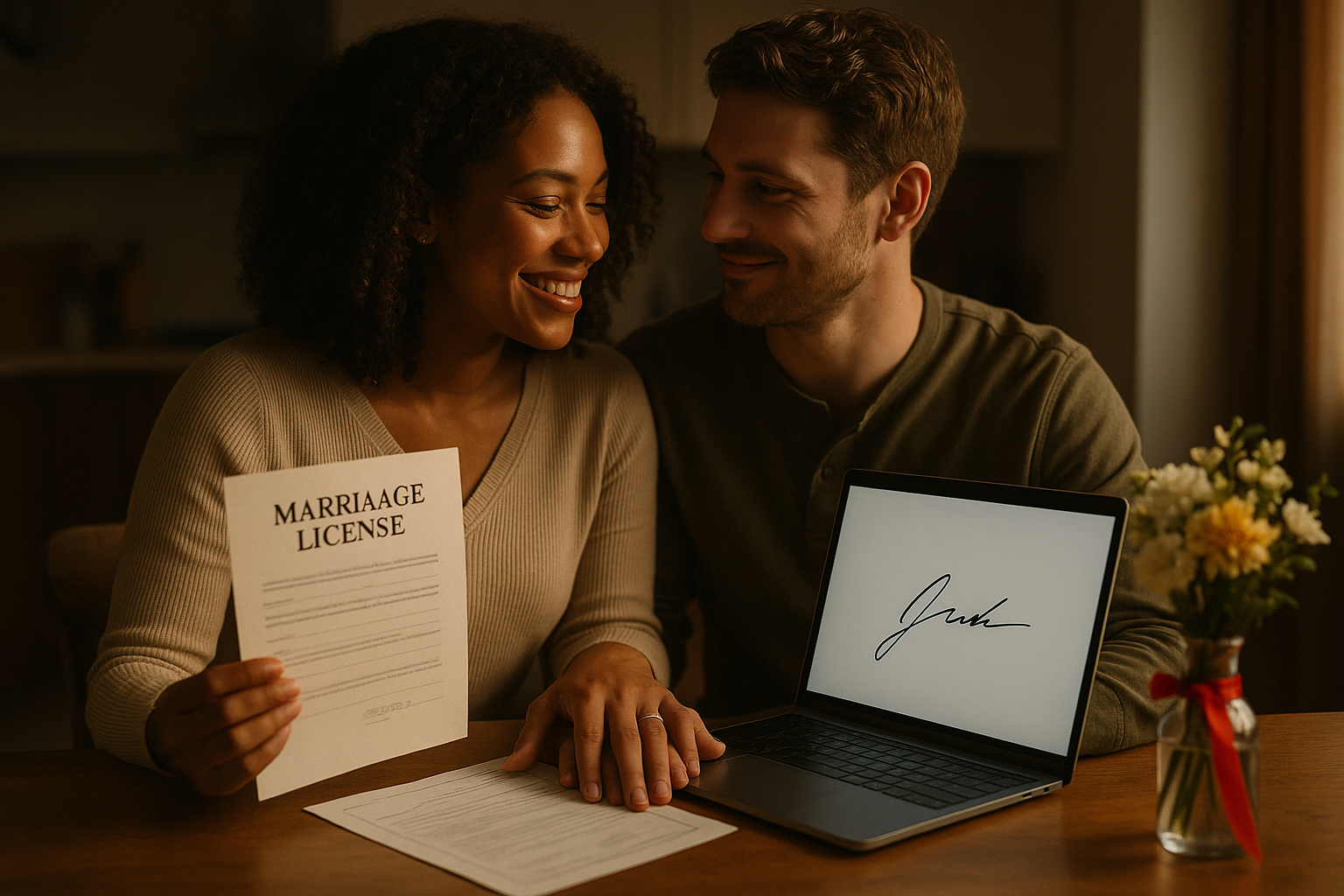In today’s digital age, couples are increasingly opting for virtual marriage ceremonies, allowing them to tie the knot from the comfort of their own homes. However, understanding how to properly file a virtual marriage license with the county is crucial to ensure your marriage is legally recognized. Let’s walk through the process step by step.
Understanding Virtual Marriage Licenses
A virtual marriage license is a legal document obtained and filed electronically, permitting couples to marry without visiting the county clerk’s office in person. This process varies by state and county, so it’s essential to familiarize yourself with local regulations.
Step 1: Verify Eligibility for Virtual Marriage
Before proceeding, confirm that your state and county permit virtual marriages. For instance, California allows online marriage licenses and virtual ceremonies under specific conditions. ([smcacre.gov](https://smcacre.gov/county-clerk-recorder/online-marriage-licenses-virtual-marriage-ceremonies?utm_source=openai))
Step 2: Complete the Online Application
Most counties offer an online portal where you can submit your marriage license application. You’ll typically need to provide:
- Full legal names
- Dates of birth
- Valid government-issued photo identification
- Social Security numbers
- Proof of dissolution of previous marriages, if applicable
Ensure all information is accurate to avoid delays.
Step 3: Schedule a Virtual Appointment
After submitting your application, you’ll need to schedule a virtual appointment with the county clerk’s office. During this video conference, both parties must be present and may be required to:
- Present valid photo identification
- Confirm personal details
- Pay the applicable fee
For example, in Berks County, Pennsylvania, applicants must schedule a virtual appointment via Microsoft Teams. ([berkspa.gov](https://www.berkspa.gov/departments/register-of-wills/marriage-license?utm_source=openai))
Step 4: Obtain and Sign the Marriage License
Once your application is approved, the county will issue your marriage license. Depending on the county’s procedures, you may receive it electronically or by mail. Both parties must sign the license, and in some cases, an officiant’s signature may also be required.
Step 5: Conduct the Virtual Marriage Ceremony
With your marriage license in hand, you can proceed with the virtual ceremony. Ensure that the officiant is authorized to perform marriages in your jurisdiction. Some counties offer virtual ceremonies conducted by the clerk’s office, while others may require you to arrange your own officiant.
Step 6: Return the Signed Marriage License
After the ceremony, the signed marriage license must be returned to the county clerk’s office for recording. This can often be done electronically or by mail. For instance, in Tarrant County, Texas, the officiant is responsible for returning the license within 30 days. ([tarrantcountytx.gov](https://www.tarrantcountytx.gov/en/county-clerk/vital-records/marriage-licenses.html?utm_source=openai))
Step 7: Obtain Certified Copies of the Marriage Certificate
Once the county records your marriage license, you can request certified copies of your marriage certificate. These copies serve as legal proof of your marriage and may be required for various purposes, such as name changes or immigration processes.
Common Questions About Filing a Virtual Marriage License
Is a virtual marriage legally recognized?
Yes, if conducted in accordance with state and county regulations, virtual marriages are legally recognized.
Do both parties need to be physically present during the virtual ceremony?
Requirements vary by jurisdiction. Some counties require both parties to be physically together during the virtual ceremony, while others may allow them to be in separate locations.
How long does it take to receive a marriage license virtually?
Processing times vary by county. It’s advisable to apply well in advance of your planned ceremony date to accommodate any potential delays.
Can we have a friend or family member officiate our virtual wedding?
Yes, as long as the individual is authorized to perform marriages in your jurisdiction. Some counties may also offer officiant services.
What if our state doesn’t allow virtual marriages?
If your state doesn’t permit virtual marriages, consider exploring options in states that do. For example, California offers online marriage services that are recognized nationwide. ([virtualsamedaymarriage.com](https://virtualsamedaymarriage.com/blog/how-to-get-married-online-in-california-fast-legal-stress-free/?utm_source=openai))
Navigating the process of filing a virtual marriage license with the county can seem daunting, but with careful attention to your local regulations and procedures, it can be a smooth and efficient experience. If you have any questions or need assistance, feel free to contact us at Virtual Same Day Marriage. We’re here to help make your virtual wedding a reality.




